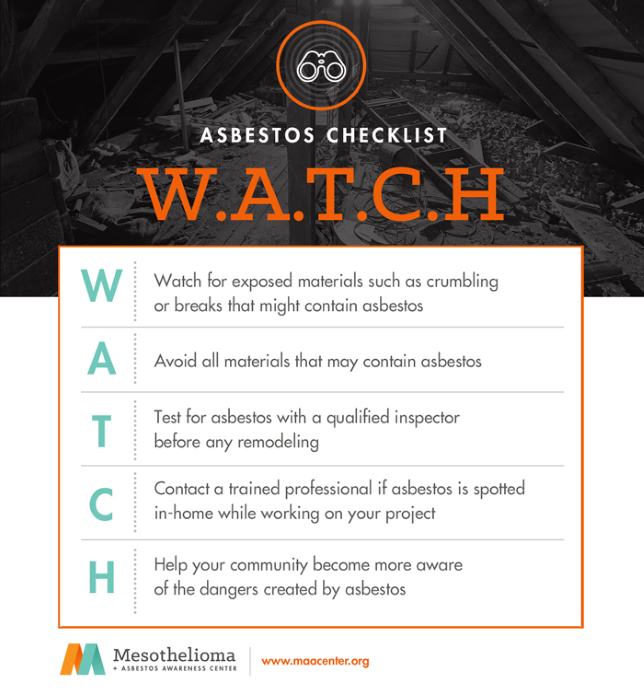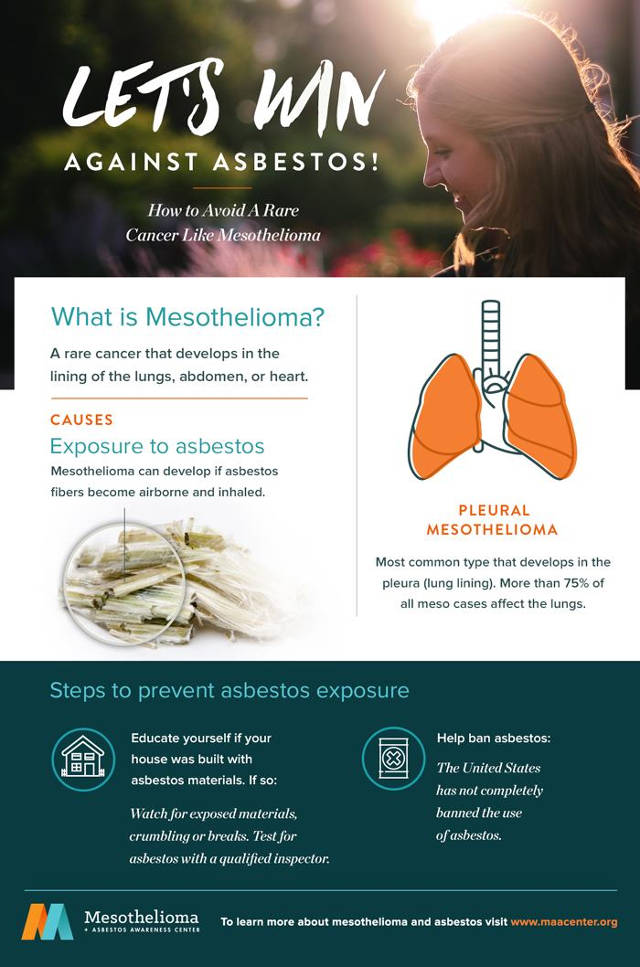Asbestos is a natural mineral known to cause a variety of life-threatening health concerns and illness. However, as dangerous as exposure to asbestos can be, asbestos remains a commonly unknown substance to many, as it does not receive the precautionary attention it deserves. Today asbestos use is not yet banned in the United States and remains in use in the production of many products and is housed in buildings and homes built prior to 1980.
Now more than ever, it is important to be aware of asbestos and to know how to W.A.T.C.H for asbestos to avoid being exposed.
Because asbestos is an effective fire-resistant material, it was heavily used during construction of homes and buildings including schools. Its strength and malleability allowed for asbestos to be added to adhesives, concrete, roof shingles, asphalt pipes, wall boards, floor tiles, duct work and for thermal insulation use. Insulation for pipes, furnaces and attics may contain asbestos, siding, soundproofing applications, plaster and joint compounds, some plastics, paints, casings for electrical wires and flooring adhesives may also contain asbestos.
Generally speaking, asbestos is safe if left undisturbed and if not inhaled or ingested. If it is suspected that a material contains asbestos or you discover asbestos, it is important that you do not touch or disturb it in any way. Even areas where it is likely fibers could have fallen, such as a basement containing asbestos insulation or ductwork, do not sweep or use a fan in an area.
Once asbestos fibers become airborne and inhaled or ingested, health concerns can develop after a latency period ranging between 10-40 years as fibers can become lodged in the lungs, abdomen or heart.
For the most part, consider caution with insulation, vehicle parts, potting soils, construction materials and fireproof clothing used by firefighters and other professions that use fireproof mitts.
Construction workers, veterans and other tradesmen are often most likely to be exposed to such products or asbestos in general. For more information and history visit the Mesothelioma + Asbestos Awareness Center website to learn more about their community advocacy and asbestos awareness efforts. This first week April, especially, help spread the word and raise asbestos awareness using hashtag #GAAW.


